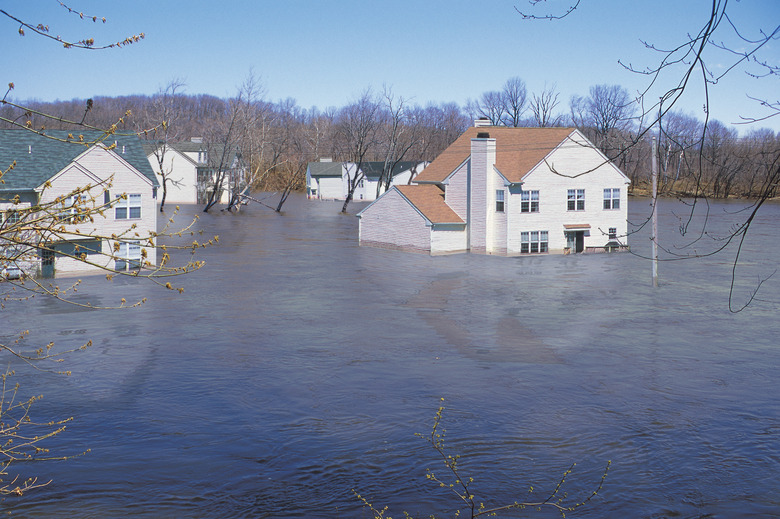The Dangers Of Rain
Your perception of rain probably depends on the area where you live. If you're used to rain, you might just think, "Oh, it's just rain — again," but if you live in a coastal area plagued by tropical storms, you're no stranger to flood waters. You might find rain relaxing, or the stressful driving conditions might seem too much to bear. The various dangers of rain might seem obvious to some people, while others won't notice them until an accident strikes.
Flooding
Flooding
While most people might equate a tropical storm with harsh winds, these storms also dump a mass of rainwater over the land, which can cause inland flooding. Even areas that do not encounter tropical storms but see a vast amount of rainfall could potentially flood. Walking in floodwater, even if it is just 15 centimeters (6 inches) deep, could cause accidents like drowning. Downed wires can cause electric shock. Driving through flood waters is not a smart idea, either, as vehicles can be swept away in as little as 60 centimeters (about 24 inches).
Automobile Accidents
Automobile Accidents
More car accidents happen in wet weather. The rainfall can partially obstruct your vision, especially if your wiper blades are old and brittle. Sometimes drivers forget to turn on their headlights, which help other drivers see them on the road. Driving too fast on wet, slick roads or following too closely to another vehicle often causes accidents because it takes longer for your car to adjust on the wet roads, and the slickness of the road might cause cars to skid. Driving through the water that collects toward the sides of roads could cause you to hydroplane or slide off the road completely.
Acid Rain
Acid Rain
When emissions like sulfur dioxide and nitrogen oxides from burning fossil fuels react with water in the atmosphere, acidic precipitation falls to the ground and affects various plants, animals and even man-made structures on the Earth. Acid rain makes lakes and rivers more acidic, which destroys some animal life. Acid rain also destroys forests by making it harder for plants to obtain nutrients. When one part of an ecosystem is affected by acid rain, it affects the lives of other plants and animals within that area. Acid rain contributes to building and statue decay as well.
Mudslides
Mudslides
Mudslides are notorious dangers in areas like California, where wildfires have left slopes without plants to protect the soil from washing away. Mudslides carry debris like rocks, brushes or trash down slopes, which increases their damaging power. Speeds of 20 mph are not uncommon, and even speeds up to 100 mph are possible. Homes in the path of mudslides could be destroyed, and anyone inhabiting the home could be injured.
Cite This Article
MLA
Batema, Cara. "The Dangers Of Rain" sciencing.com, https://www.sciencing.com/dangers-rain-4881/. 24 April 2017.
APA
Batema, Cara. (2017, April 24). The Dangers Of Rain. sciencing.com. Retrieved from https://www.sciencing.com/dangers-rain-4881/
Chicago
Batema, Cara. The Dangers Of Rain last modified March 24, 2022. https://www.sciencing.com/dangers-rain-4881/
